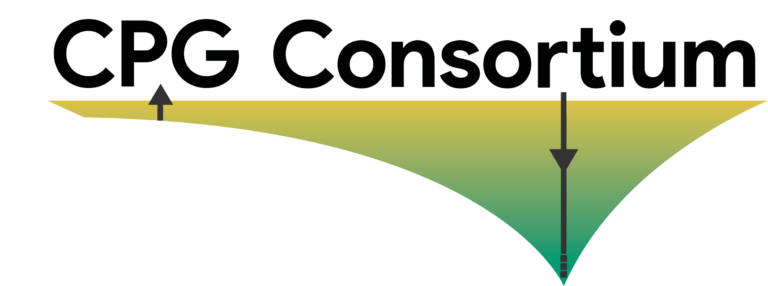
Mailing Address
Lily Suherlina
Geothermal Energy & Geofluids
Institute of Geophysics
NO F 51.1
Sonneggstrasse 5
CH-8092 Zurich Switzerland
Contact
| Phone | +41 44 633 4041 |
| lsuherlina(at)ethz.ch |
Administration
| Prisca Maurantonio | |
| +41 44 632 3465 | |
| prisca.maurantonio@eaps.ethz.ch | |
Publications
[Go to Proceedings Refereed] [Go to Proceedings Non-Refereed] [Go to Theses]
Underlined names are links to current or past GEG members
REFEREED PUBLICATIONS IN JOURNALS
2.
Suherlina, L., J. Newson, Y. Kamah, and M. Brehme, The Dynamic Evolution of the Lahendong Geothermal System in North-Sulawesi, Indonesia. , Geothermics , 105, pp. 1-19, 2022. https://doi.org/10.1016/j.geothermics.2022.102510 [Download] [View Abstract]This study uses an integrated approach to characterize the dynamic evolution of the power-
producing high-enthalpy geothermal system of Lahendong, North-Sulawesi, Indonesia.
Lahendong has two primary reservoirs, the southern and the northern, which have been utilised
for electricity production for more than twenty years. The main focus of this study is the
characterisation of heat and mass flows in the system with respect to geological structures and
permeability distribution. Also, it delineates how the geothermal system has evolved and the
spatial variation of the response resulting from prolonged utilization of the reservoirs.
This research implemented geological structure analysis on recent surface fault mapping and
pre-existing fault studies from literature. Further, the study analysed well data comprising well
pressure, enthalpy, drilling program reviews and tracer tests. Hydrochemical investigation
compiled new and old surface and subsurface hydrochemical evolution in both the temporal
and spatial domain.
The results confirm several trends of faults in the study area: NE-SW and NW-SE are the major
striking directions, while E-W and N-S are less dominant. The most apparent trends are NE-
SW striking strike-slip faults, perpendicular NW-SE thrust faults and N-S and E-W striking
normal faults. The faults compartmentalize the reservoir. A comparison of the southern and the
northern reservoir shows that the south is more structurally controlled by faults; both reservoirs
rely on fractures as permeability provider and are controlled by shallow hydrogeology, derived
from the integrated analysis of transient well data.
Geochemical analysis shows that the reservoir fluids have generally higher Electrical
Conductivity and closer to fluid-rock equilibrium, probably due to boiling. Spring waters have
generally become more acidic, which is an expected result of reservoir boiling and increased
steam input to near-surface waters. The spatial distribution of changes shows permeability
evolution over time and also the role of structural permeability in response to changing reservoir
conditions.
Observing and recording reservoir data is highly important to understand the reservoir response
to production and ensure the long-term sustainability of the system. Additionally, the data is
critical for making a major difference in the reservoir management strategy.
1.
Brehme, M., R. Giese, L. Suherlina, and Y. Kamah, Geothermal sweetspots identified in a volcanic lake integrating bathymetry and fluid chemistry, Nature Scientific Reports, 9/16153, 2019. https://doi.org/10.1038/s41598-019-52638-z [Download]
[back to Top of Page]
PROCEEDINGS REFEREED
3.
Suherlina, L., D. Bruhn, M.O. Saar, Y. Kamah, and M. Brehme, Updated Geological and Structural Conceptual Model in High Temperature Geothermal Field, European Geothermal Congress 2022, 2022.
2.
Suherlina, L., M. Brehme, J. Newson, Y. Kamah, I.M. Galeczka, and A. Wibowo, Characterizing reservoir dynamics using hydrochemical and structural-geological data in a high-enthalpy geothermal system, Indonesia, Proceedings World Geothermal Congress 2021, 2021.
1.
Suherlina, L., Characterizing Reservoir Dynamics Using Hydrochemical and Structural-Geological Data ina High-Enthalpy Geothermal System, Indonesia, World Geothermal Congress, pp. 1-4, 2021. [View Abstract]Aim of this study is to provide a recent reservoir characterization with a focus on the dynamics of a structurally controlled system in a high-enthalpy geothermal field in Indonesia. Combination of hydrochemistry and structural geology allows an integrated view on historical changes in deep reservoir behaviour and surface thermal manifestations as result of 15 years exploitation.
Implemented methods throughout the study include detailed fault surface mapping in the field, analysis of physicochemical properties and major and minor ions.
The combination of recent fault mapping and previous studies confirms the existence of four general fault trends in the area including NE-SW, NW-SE, N-S and E-W. Along these faults and at intersections points surface thermal springs occur, which show physical and chemical evolution over the exploitation time. At present time, spring waters generally turn into more acidic followed by significant changes in physical features (e.g. size, steam fraction). The reservoir fluids generally become more saline nowadays with boiling as a possible reason.
The physical and chemical changes in thermal springs and the deep reservoir indicate recent fluid dynamics in the geothermal system. The exploitation of the system triggers changes of fluid flow pathways, leading to mixing and changing fluid volumes in springs and wells. Observing these processes in a continuous and careful reservoir monitoring is highly important to ensure the long-term sustainability of the system.


